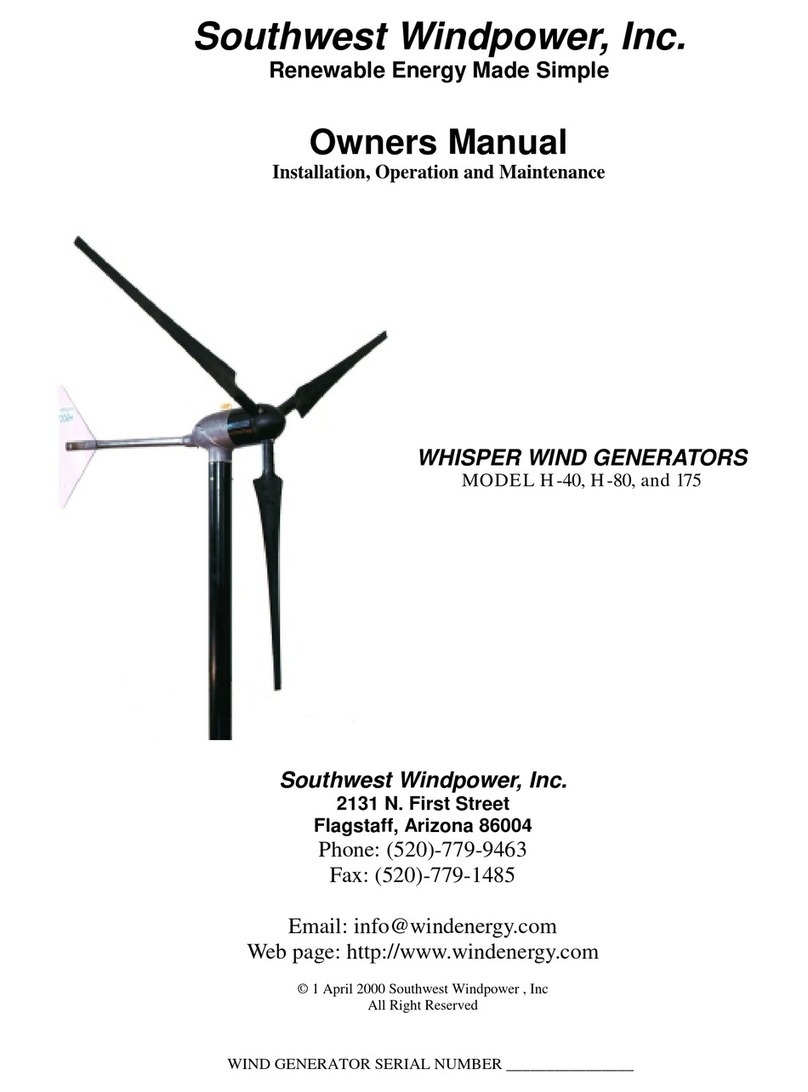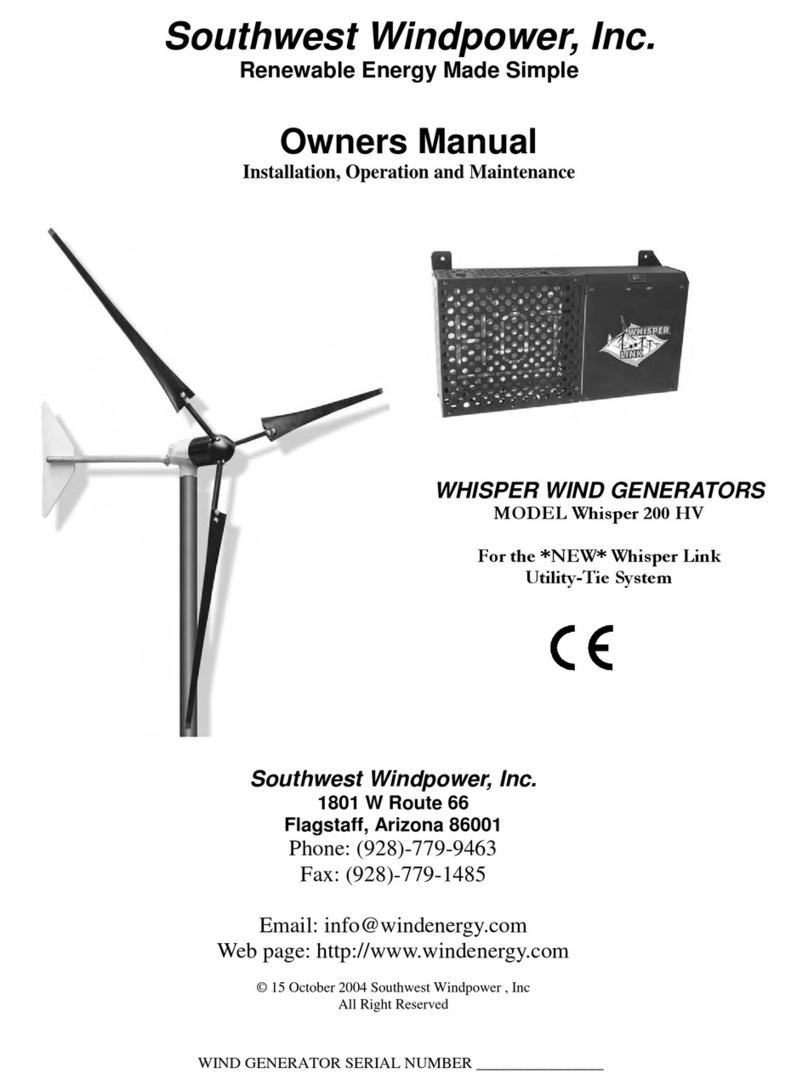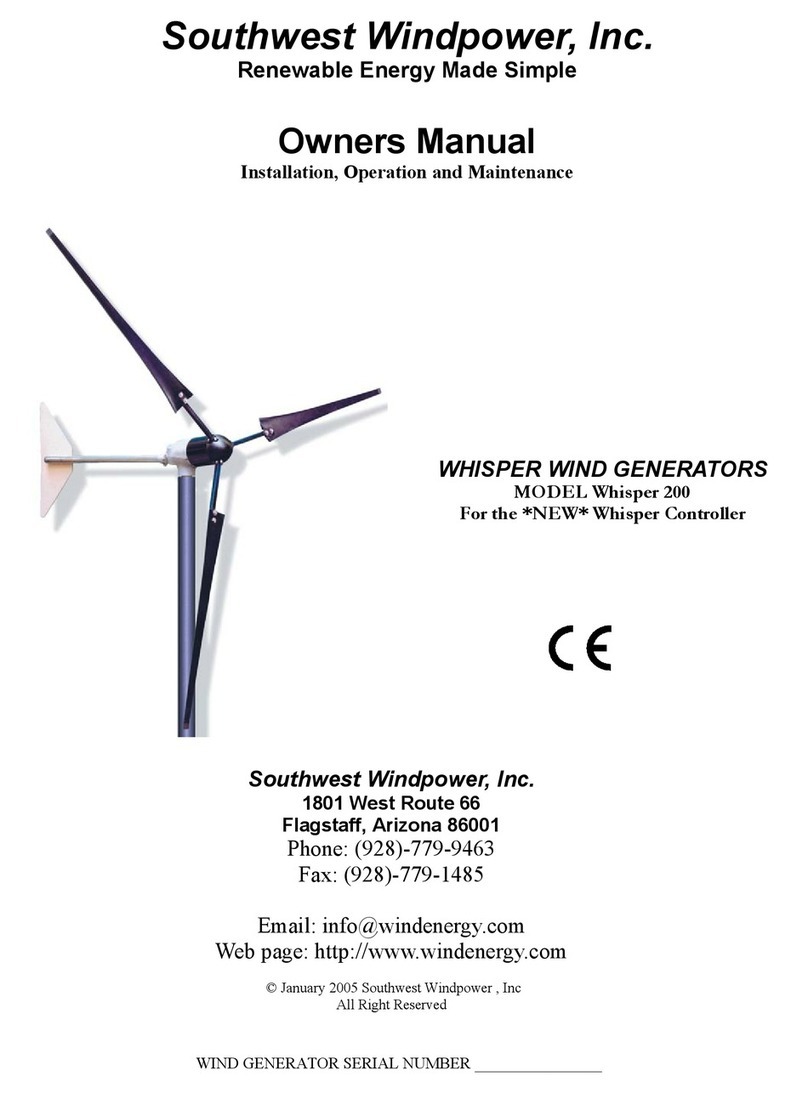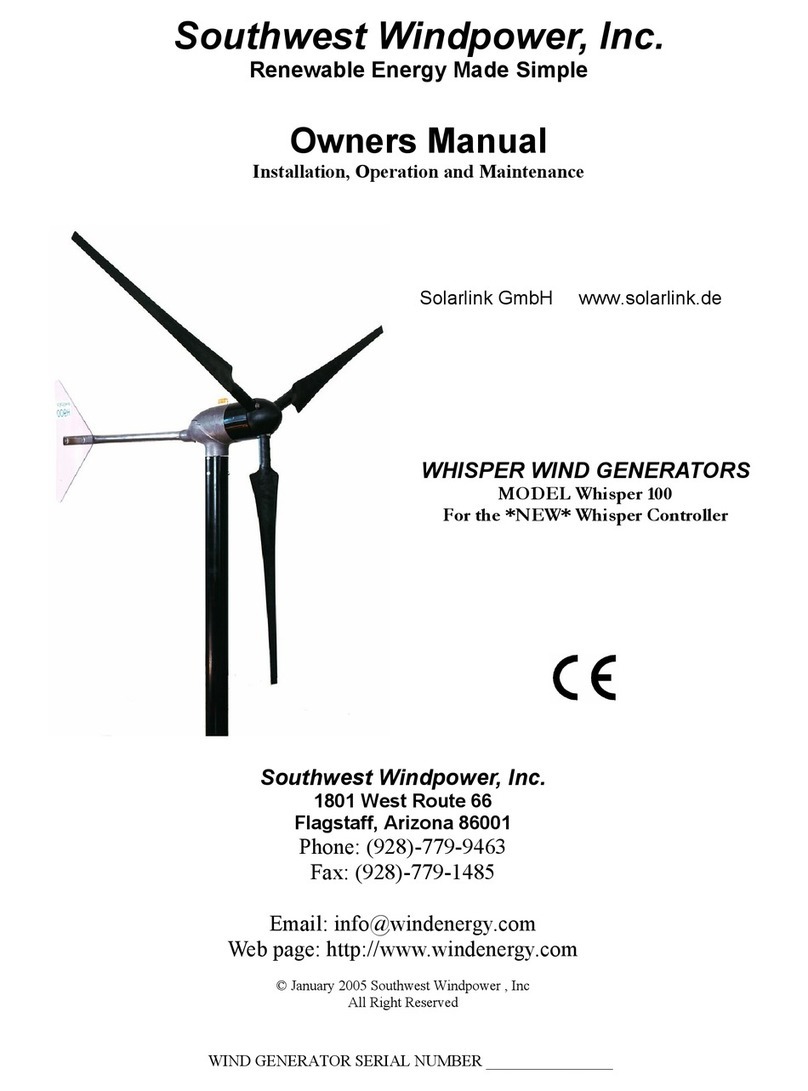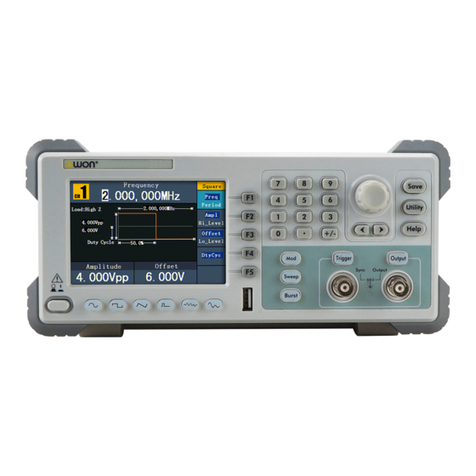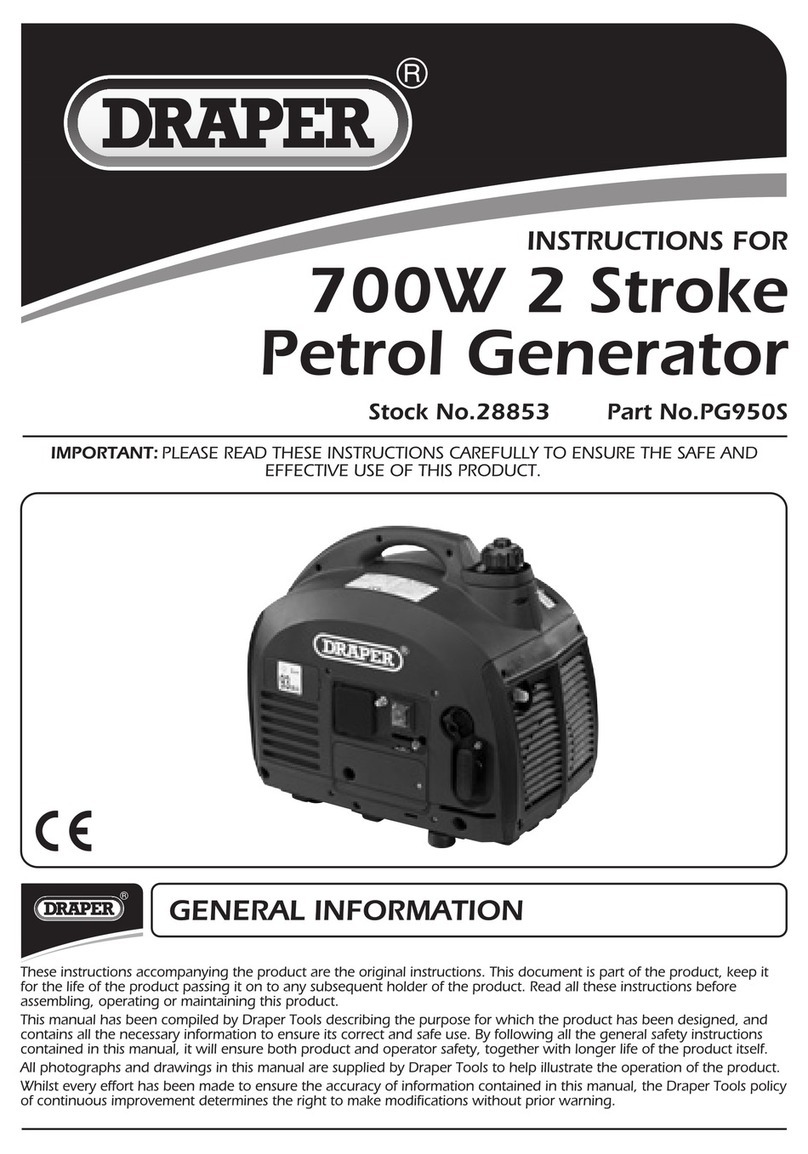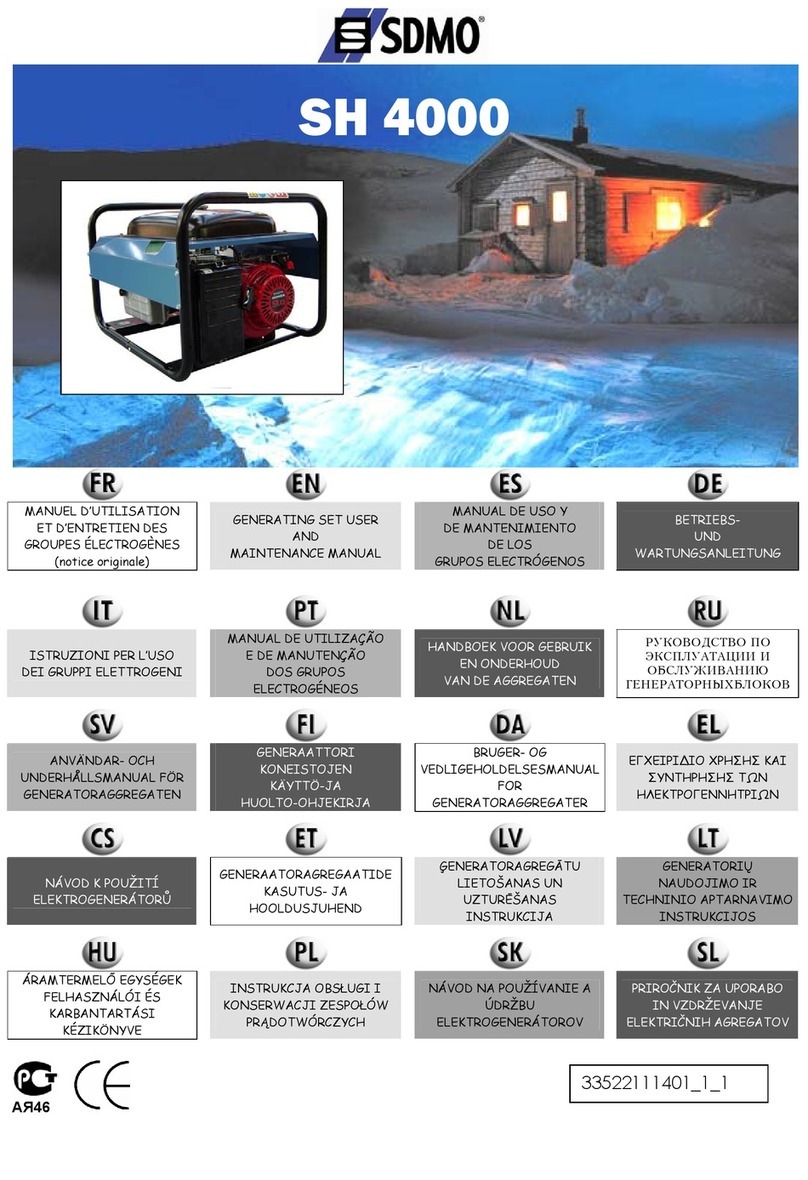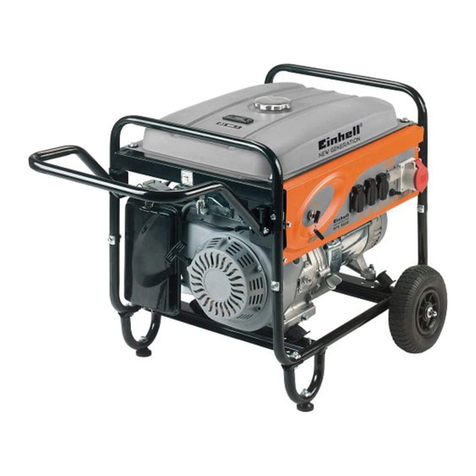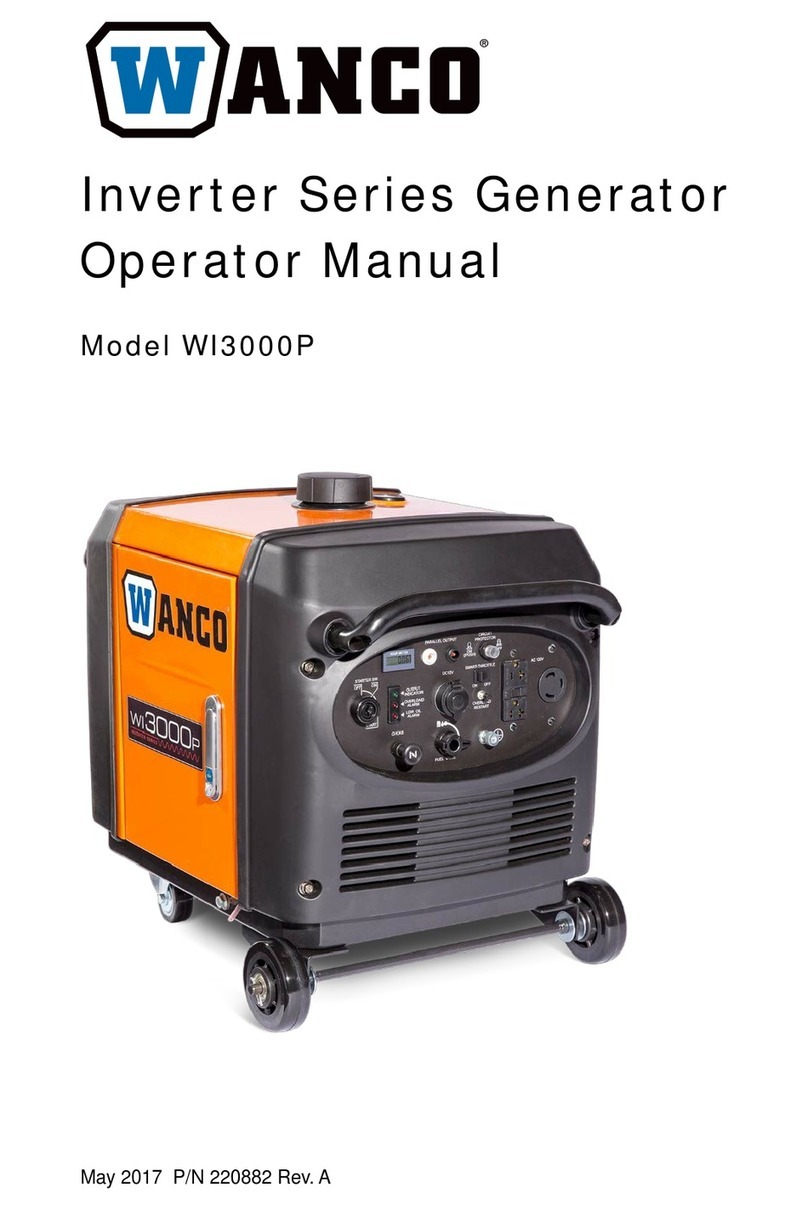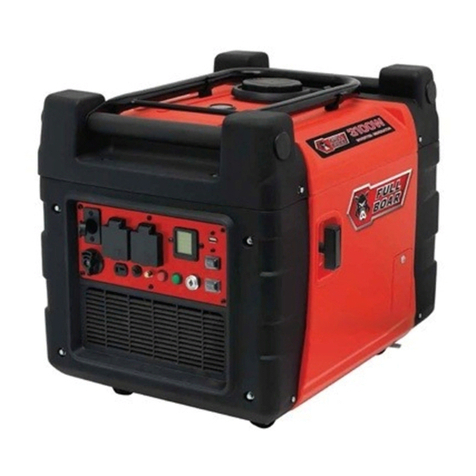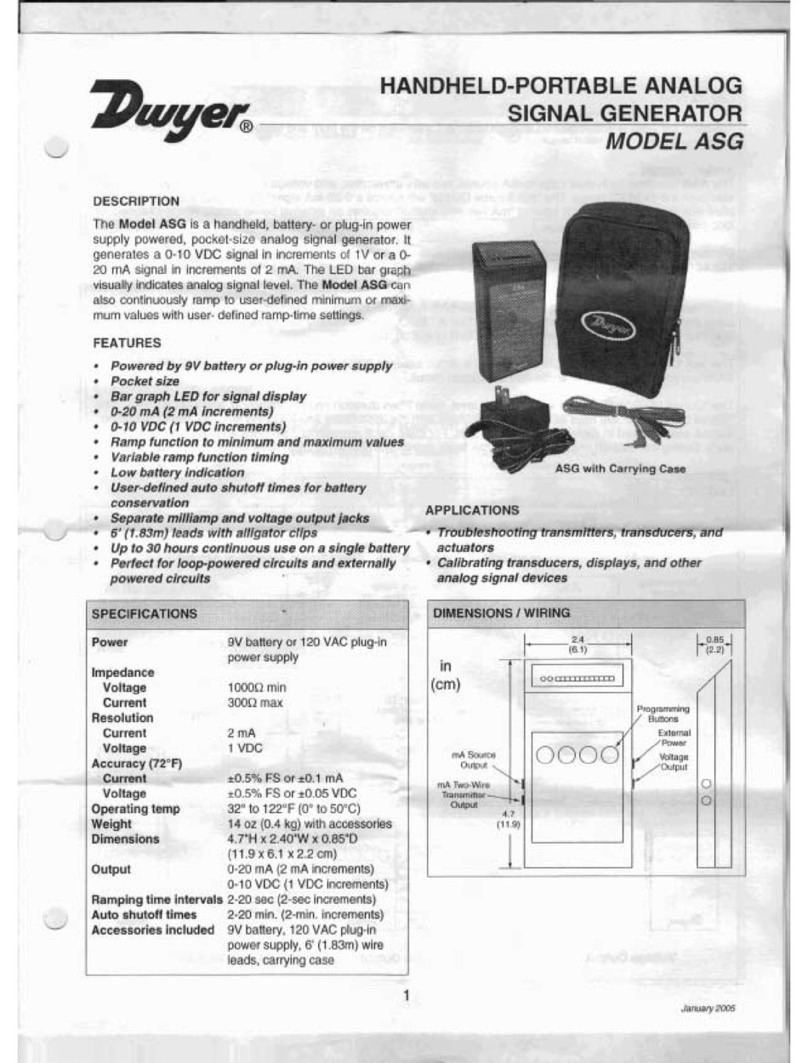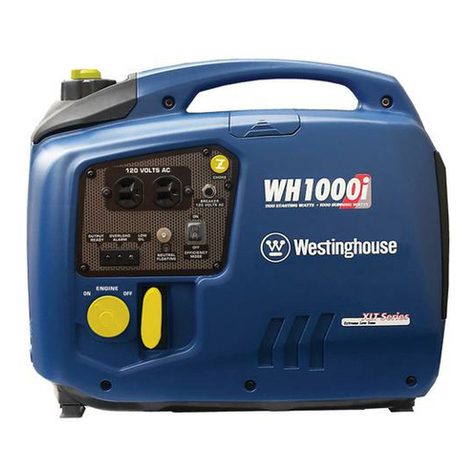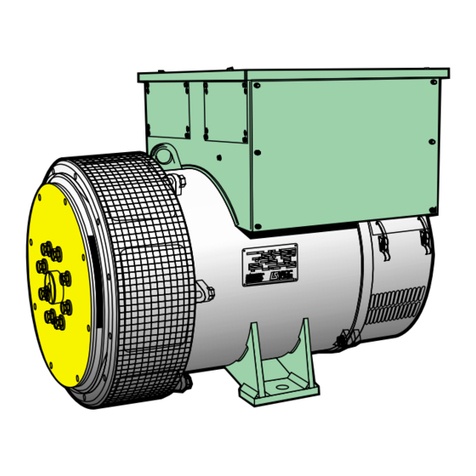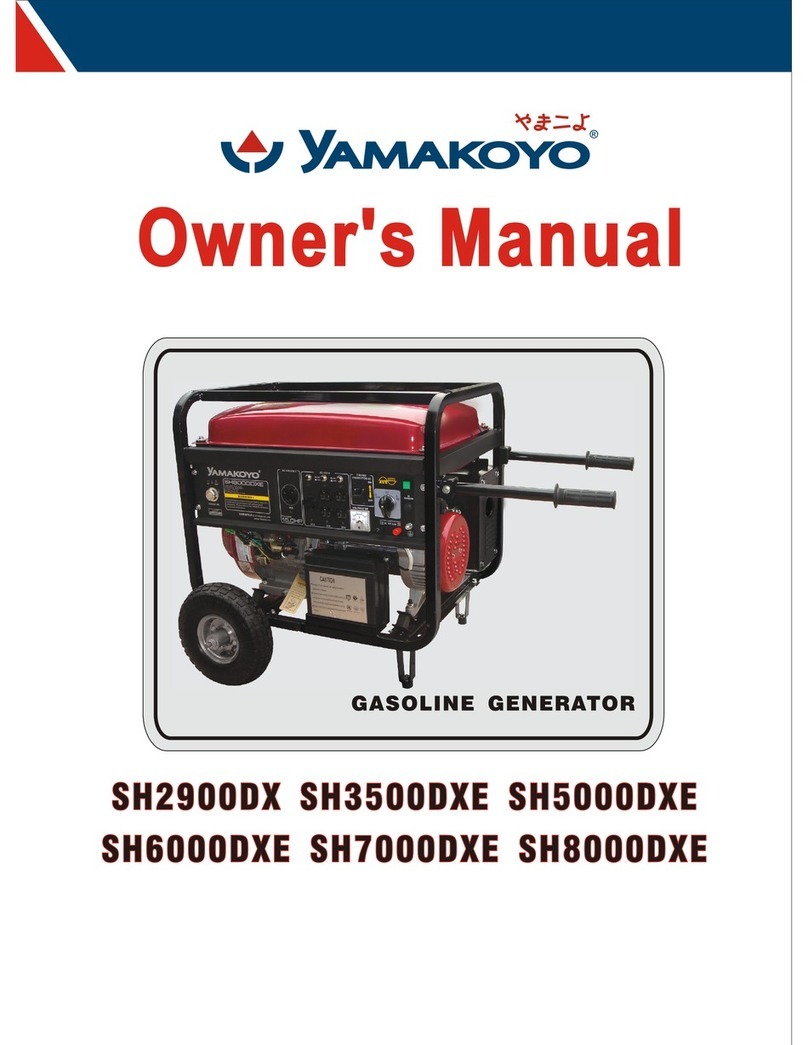
2
Whisper H-80 Manual Document #0022 REV B
SOUTHWEST WINDPOWER 2/4/2001
WELCOME TO YOUR RENEWABLE ENERGY SYSTEM!
ELECTRICITY FROM THE WIND AND SUN:
Renewable electric power systems provide independent (no utility grid!) electric power for boats, homeowners,
farms, villages and commercial applications such as telecommunications. If utility power is available, your
renewable energy system can reduce the electric bill and provide back up electricity during storms or line failure.
The most common sources of renewable electric power in these systems are small wind powered generators and
solar photovoltaic (pv) modules that convert sunlight directly to electricity. Renewable means power sources that do
not deplete the world's finite fossil fuel resources, do not pollute or warm the atmosphere and do not generate
hazardous waste. Electricity means your children can study at night for a better future and you can benefit from
appliances, power tools and communication technologies that make life easier and more rewarding. Nearly three
billion people in the world do not have electricity and by necessity most will ultimately get their electricity from
renewable resources to the benefit of everybody. You are a pioneer and part of the solution!
BEFORE YOU BEGIN:
Read this entire manual. Identify and note your model wind generator where it appears in this manual. Following
the instructions and recommendations in this manual will help assure safe and enjoyable use of your new renewable
energy system.
SAFETY INFORMATION: These systems present mechanical, electrical and chemical (battery) hazards that
can be life threatening. The tower or support structure could fall and cause injury or death and property
destruction. A component of the wind generator could come loose causing injury or death and property
destruction. Contact with the high speed propeller can result in severe injury or death. High voltage from the
wind generator or the inverter can cause injury or electrocution. A burn injury can result from an electrical
short. A severe chemical burn including blinding can occur from a battery explosion or contact with the
sulfuric acid in a lead-acid battery.
These conditions are addressed in the following safety messages:
STOP! DANGER! It is your responsibility to obtain all required permits and engineering certifications for your
tower and tower location. Soil and wind conditions vary and towers and tower foundations must be designed for
your specific location. Tower must not be able to fall on occupied buildings, neighbor's property or power lines.
Tower climbing is dangerous and should be attempted only by experienced personnel using proper safety equipment.
A fold-over tower can eliminate climbing. Locate your mounting mast (tower) well away from occupied buildings
and power lines; a minimum of 100m (300 ft) is recommended.
STOP! DANGER! If the generator appears or sounds loose in the tower or is making an unusual sound, the
condition must be corrected immediately. A loose generator or component will soon damage itself further and may
fall from the tower or lose parts that could be lethal. Never stand in line with an operating propeller.
STOP! DANGER! Provide climbing protection against all unauthorized persons or children. Never allow an
untrained person or someone without the proper safety equipment to climb the tower. Always stop the propeller
before climbing the tower. Both falling from the tower and contact with the operating propeller can be lethal.
STOP! DANGER! High voltage systems (that is, systems with battery voltages of 64 volts and above or the primary
side of any system with a transformer) represent a dangerous shock hazard and could be lethal. All high voltage
systems should be wired and maintained by a qualified and licensed electrician.
STOP! DANGER! Batteries may emit explosive and irritating gas while charging. Never turn on a light switch or
make any other electrical connection or light a match or make any type of spark near a recently-charged battery. Use
protective gloves and eyeglasses when working around a battery. Turn off all loads, wear safety glasses, and look
away when making a final battery connection.
STOP! DANGER! NEVER place objects on top or near the EZ-WIRE enclosure. These devices must dissipate heat
as part of normal operation. FIRE AND FAILURE can result if airflow is blocked.

